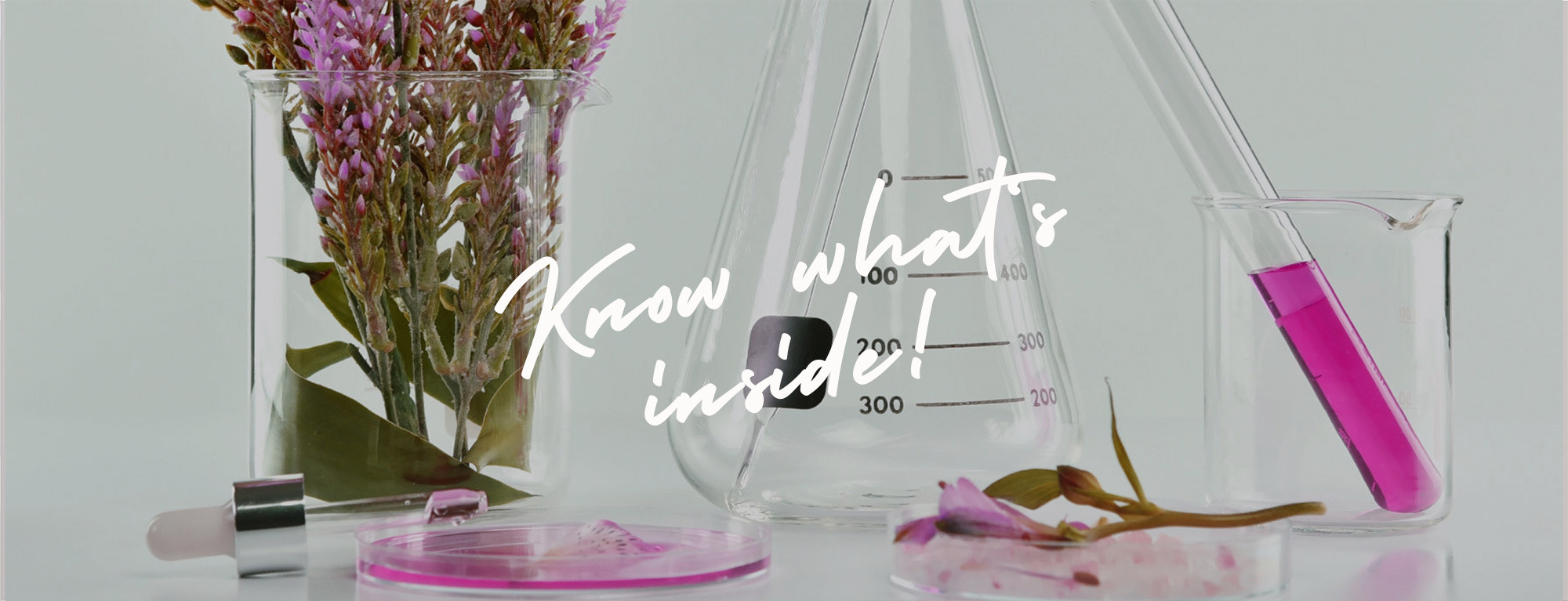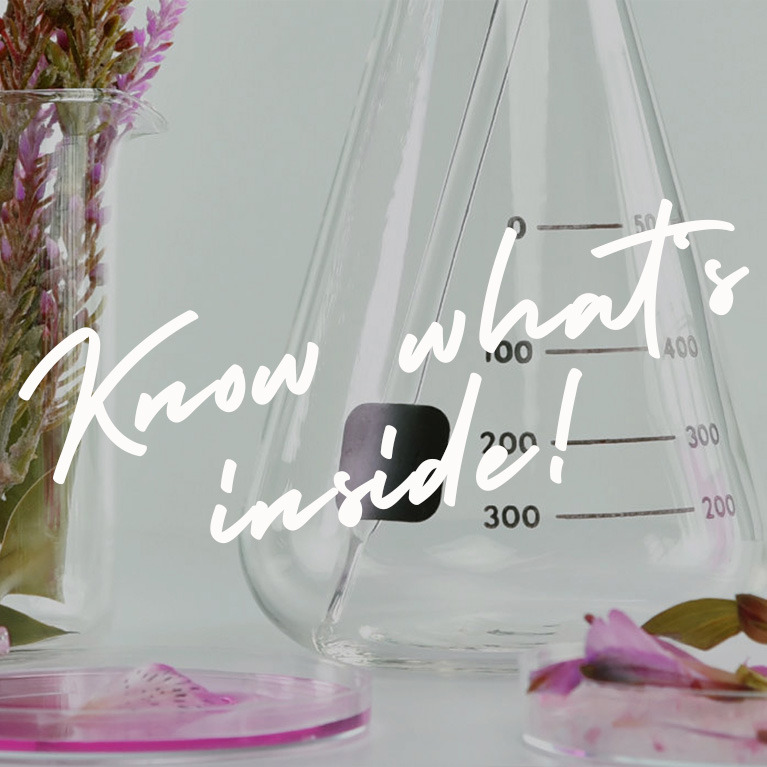

Raw material transparency – know what’s inside
We want to offer beautiful and above all safe beauty products for everyone.
Therefore, in addition to the legal requirements, we also test all our raw materials according to further internal criteria. We include undesirable substances in our banned substances list, which currently comprises more than 60 individual substances and substance groups. These substances are prohibited for future development projects. We therefore have even stricter criteria for the selection of raw materials than required by law. Because we are convinced that only those who act responsibly can be successful in the long term.
We scrutinize every substance
Since 2015, cosnova has been carefully checking all raw materials for additional health, environmental and social aspects. This is carried out by our sustainability department, which evaluates each substance according to a traffic light system – we have now examined more than 1600 substances. Our goal is to improve our entire range holistically and make it sustainable.
Our Clean Beauty banned lists
Beyond our strict list of banned substances, our Clean Beauty Standard prohibits 5 additional substances that can be problematic for your health and the environment:
- PEGs are a certain type of emulsifiers, i.e. substances that combine water and oil to form a cream. They can irritate and dry out the skin and make the skin more permeable for other chemicals. Moreover, many of these emulsifiers are critical for water bodies and aquatic organisms when they enter the sewage system.
- Parabens have been used as preservatives in cosmetics products for many years. In recent years, some of the parabens have been banned by law or their application concentration has been restricted. Nevertheless, the remaining parabens can be classified as good and safe. Unfortunately, there is a persistent rumor that parabens are questionable, which is why we refrain from using them.
- Volatile silicones: There are hundreds of different silicones that are used in cosmetics products for very different purposes. Silicones are produced from sand by means of chemical reactions. Many of these silicones are completely harmless to your health, others must be considered in a more differentiated way. The same applies to their behavior in the environment. For your sake and for the sake of the environment, we do not use volatile silicones such as cylopentasiloxanes and cyclohexasiloxanes in Clean Beauty products.
- Microplastic particles are solid, insoluble substances in powder form on the basis of plastics. They are used in cosmetic products for various reasons. The focus is on product performance such as mattifying, a soft feeling on the skin, soft-focus effects to conceal wrinkles, product durability and much more. However, these plastic particles are known not to be biodegradable and therefore pose a problem for our health and the environment.
- Certain colorants: There are no colorful products without colorants. Unfortunately, it is in the nature of colorants that they might have questionable components due to their composition. This applies to both natural and synthetically produced colorants. Although we make decorative products, we set very strict standards in this area, which causes us serious headaches in the development of our products, in order to offer you the best products.
We are even stricter with our Clean Beauty PLUS products, such as the Clean ID range by CATRICE. Here, we prohibit six further substances and substance groups in addition to the Clean Beauty standards:
- Silicones: of any kind
- Mineral oil: is subject to public criticism due to possible contamination. However, mineral oil with a high purity can be used without any problems or concerns. The situation is different when it comes to environmental aspects. Mineral oil is not a renewable resource and therefore its use is not very sustainable. For this reason, we do not use any mineral oil or substances based on mineral oil.
- Exotic raw materials: The protection of our environment and natural habitats is a matter close to our heart. For this reason, we do not want to unnecessarily interfere with the environment and therefore do not use ingredients that would otherwise have to be procured specially for our products from far away, exotic places. Only sustainably sourced exotic ingredients find their way into our Clean Beauty PLUS products.
- Declarable fragrances: We all love fragrant cosmetics products, but none of us likes allergies. Some of these wonderfully scented perfumes or aromas can promote allergies. Therefore, in order to protect our consumers, certain fragrances must be listed individually on the INCI list as soon as they exceed a certain limit. For our Clean Beauty PLUS products, we completely forgo this type of fragrance.
- Acrylate polymers: These substances are often used as film formers and are also frequently mentioned in the context of "liquid microplastics". The fact is that these synthetic polymers do a great job for product performance. Unfortunately, they are 0 % biodegradable. For this reason, we do not use these polymers.
- Other non-degradable polymers: Substances such as polyethylene, polypropylene, polybutene, hydrogenated polyisobutene or ethylene/propylene copolymer and their related ingredients represent a group of synthetic polymers that are not particularly environmentally friendly. Therefore, we do not use these substances. However, it is important to note that not all synthetic polymers are questionable or poorly degradable. We therefore look at the individual substances very carefully and decide on a case-by-case basis.
Did you know…
… that we list all of the ingredients on the packaging according to their percentage by weight in accordance with the German Cosmetics Ordinance so that our customers know what's inside their favorite products. Particularly important for people suffering from allergies: the names of the individual substances are based on the INCI (International Nomenclature of Cosmetic Ingredients) and are standardized throughout the EU.
How does our raw material analysis work?
Alle Produkte von cosnova durchlaufen eine gesetzlich vorgegebene Sicherheitsbewertung und sind für ihren vorgesehenen Gebrauch sicher. Wir nehmen jeden Stoff genau unter die Lupe.
Our traffic light system
In addition, we carefully assess all our raw materials for health, environmental and social aspects in the supply chain. This is carried out by our sustainability department, which rates each substance according to a traffic light system. We have now examined more than 1600 substances. The aim is to improve our entire range holistically and make it sustainable. Our evaluation is based on the “hazard principle” and assesses the fundamental danger that a substance can pose, regardless of how and where it is used.
This is why we may ban substances even if they have been assessed as safe according to the safety assessment and can be used without any problems.
Substances that are rated green can still be used for all products. We take a closer look at substances in the yellow category, prioritize them according to their importance and develop strategies on how we want to deal with them in the future. Substances in the red category should no longer be used and will find their way onto our banned lists.
In short: for each substance, we ask ourselves whether we really need it and whether we want to have it on our skin or in the environment with all its advantages and disadvantages.